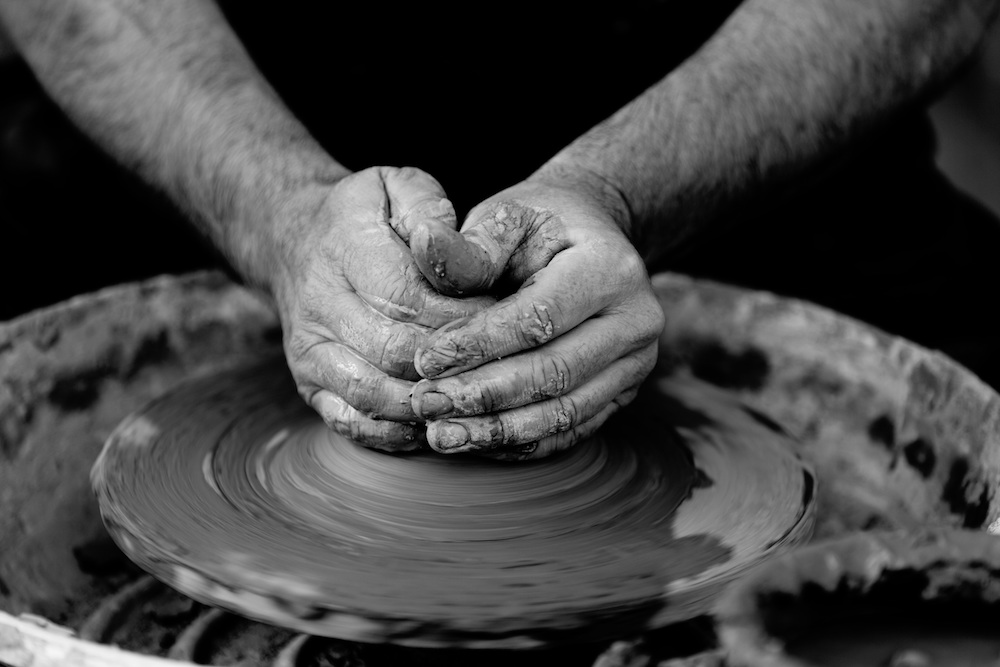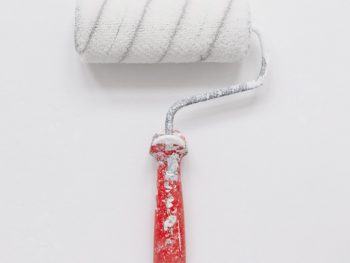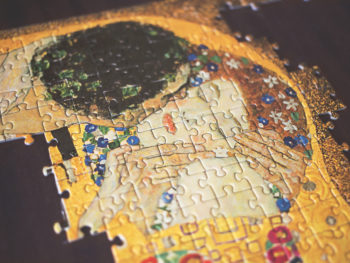
Picture this: my child finds a plastic, battery-powered pottery wheel at the thrift store. I express concern that this particular tool may not be worth the money, but she is excited and pulls out her cash.
Later, she is ready to use it. I look at the instructions. They talk about “wedging” and “centering.” They are not helpful instructions.
That’s when I go off into panicland.
(Note: I took ceramics in high school. I loved it except for—you guessed it! The pottery wheel! And centering! And the resultant lumpy mug! Of course, my nervousness about my daughter’s purchase was pure coincidence.)
I held up the instructions. “See, honey, it says you have to wedge it this way.” I take the air-dry clay and press my hands into one side, like the instructions. I do it again.
I’m never going to get this right, I think. There is no way this wheel will be powerful enough to actually shape the clay. She’s going to get frustrated and yell, and I won’t be able to pick up the pieces.
“I wanna try,” she says.
I’m almost ready to protest, to keep the clay in my hands, to keep her from the possibility of failing. But she takes the clay from me as my mouth is running on about following directions.
Then I stop talking. A moment of sanity makes me hand over her project.
“Have fun!” I say in my best calm voice.
I almost went back inside, out of the messiness I was feeling. I didn’t trust myself to not interfere. I didn’t trust myself to keep my mouth shut. I didn’t trust things to go well.
Every ounce of me wanted to check out completely. I wanted to run.
And maybe another day I would have gone inside, and that would have been okay. But something in me told me to stay.
So I got my notebook and sat with her. I watched her progress. And I tried to breathe.
She experimented, not wedging or centering or caring. She was having a ball. I got her some water, and some dental floss when she needed to take the clay off from the wheel.
She made one pot, then another one, and then we cleaned up.
And here’s what I realized: the moment that tested everything in me passed. After it was over, I got to watch my daughter show me her strength, and I got to see myself support her even though it scared me.
I was glad I stayed. I was glad I kept her company, even if it was hard.
Can we try this? The next time our brains hiccup because being present for your kids is hard, can we all just take a deep breath?
When your toddler is screaming, and you think, other people’s kids don’t fall apart like this, can we just breathe, and look at our kids?
When they are nattering on about a children’s show that is perhaps not our favorite, can we just stay still with our ears open, even if we don’t get it?
When our teenager is snide and slams their door, can we stand outside, quietly, for just a moment, before we react?
Can we take all those moments that we’re less-than as parents, the moments where we realize that we’re really not up to snuff, and sit in them with our kids, and realize that nobody needs to win any awards? That keeping quiet, and watching ourselves and our beloved children is enough?
Simply being faithful and quiet in one messy moment transforms not just my attitude towards my children, but my attitude towards myself: cultivating an awareness that with kids (and life), doing is less important than being.
Image credit: ishutterthethought
 Looking to find more authenticity in your approach to faith? Subscribe via email, and get my ebook about post-pefectionist faith. Check it out here.
Looking to find more authenticity in your approach to faith? Subscribe via email, and get my ebook about post-pefectionist faith. Check it out here.













 Welcome Is More than Words
Welcome Is More than Words